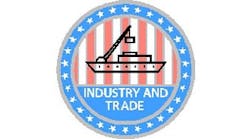During another part of the presentation, Dietmar Reinert, deputy director at IFA, said that standards mattered in Europe because of legislative issues. Before the harmonized EU standards, there were 27 countries with differing standards, particularly for goods imported from one to another. "Now for the machine builder, no EU country can have higher requirements," he said. "The free movement of goods in the EU is protected by the Machinery Directives, which prescribe maximum protections. If you follow harmonized EU standards, then you fulfill the requirements of the Machinery Directive."
So, how does IFA work? "We have safety inspectors in the field to investigate accidents, but sometimes manufacturers come to us because there is no standard to fit their particular needs," Reinert explained. "They ask us to review their approach and accept it. Since we are a Notified Body, we can eventually certify that the solution is safe."
For a first design, IFA creates a test specification and test procedure. "We discuss the testing concept with other Notified Bodies in Europe, and if all is in order, an EC-type examination [certificate] is given to the manufacturer, and the new product then can be sold in the European market," he added.
Later, Reinert said, IFA introduces the testing and certification procedure into a European standard as a harmonized standard according to the Machinery Directive. The standard then can be brought to the global level via ISO or IEC.
One of the more novel examples of IFA's work to certify new safety products for the EU is a project that developed a near-infrared spectral signature of human skin for a new type of safety light curtain. It can discriminate skin from all other materials and objects, such as glass, work gloves or materials that conventional light curtains can't distinguish. Here, too, the goal will be to create a harmonized standard for this technology.
Reinert concluded with a few thoughts about IFA's view of the continuing evolution of safety standards. He's quite certain that the more we integrate safety into the process, the more it will be accepted by the user.
"But, as a consequence, safety technology becomes more complex within the design and by using it, so investigations for usability will become more and more important," he advised. "It's clear that the user has to be integrated into the design process of machinery."




